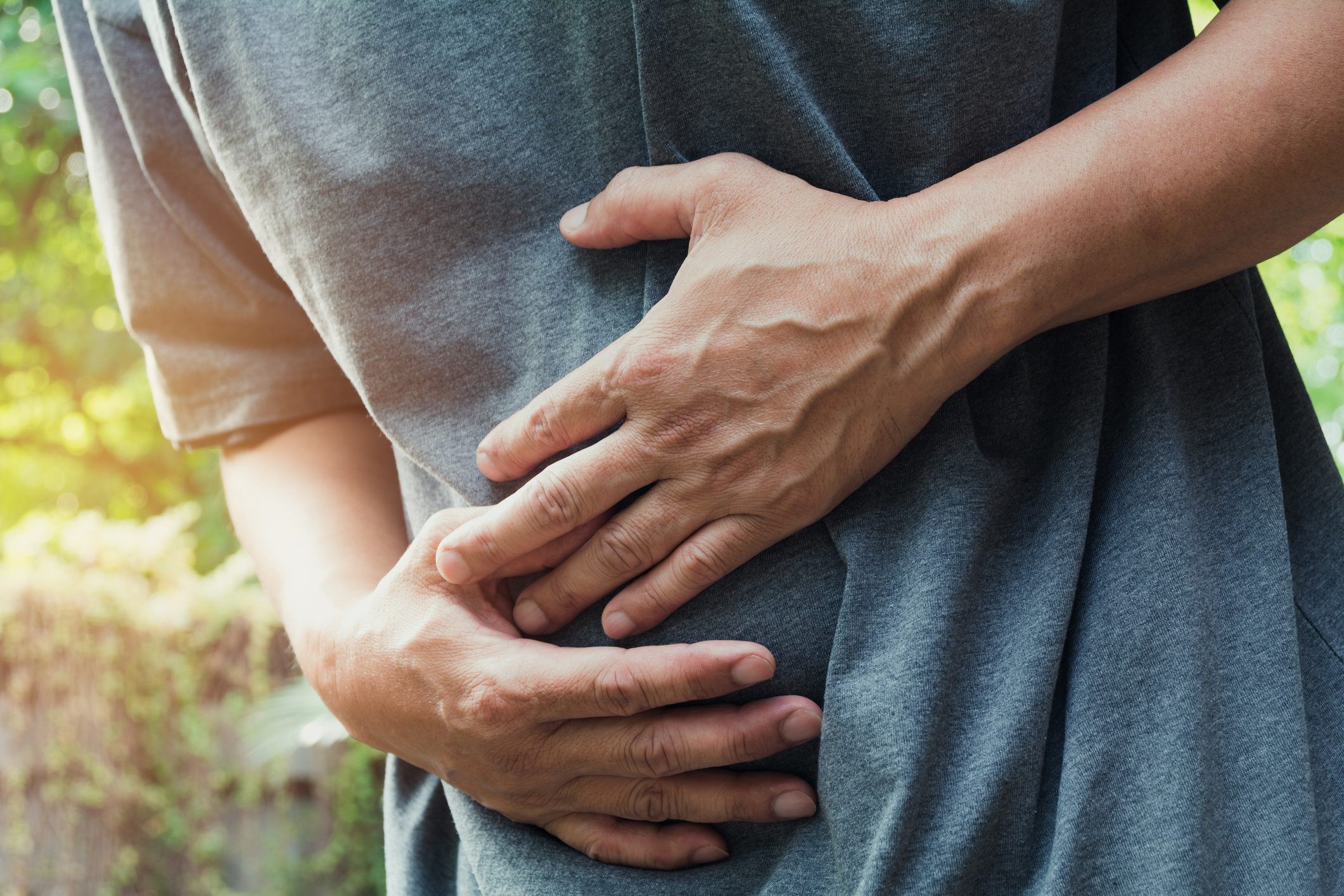
Positive or negative Blumberg's sign: what it is and when it indicates peritonitis
In medicine, Blumberg’s sign is a clinical sign indicating inflammation of the peritoneal wall
It occurs when the patient experiences a “rebound pain” on palpation of the abdomen.
How Blumberg’s sign is evoked
- the patient is in the supine position;
- the doctor exerts light pressure on the abdomen, starting from non-spontaneously painful areas, looking for areas of contracture, which is sometimes significant (wooden or table abdomen);
- the doctor identifies an area of contracture or tenderness evoked on palpation;
- in this area the doctor, during palpation, abruptly lifts his hands from the abdomen;
- if this movement generates acute stabbing pain, or a worsening of the pain, Blumberg’s sign is positive and this indicates a possible peritonitis;
- if this movement does not generate sharp stabbing pain, or does not aggravate the pain, Blumberg’s sign is negative, however it does not necessarily exclude the presence of an abdominal pathology.
Given the frequency with which it occurs in an emergency, Blumberg’s sign is often sought in the area where the appendix is most likely located, in the so-called McBurney point, which is located two-thirds of the way from the anterior iliac spine – upper right at the navel (see photo above).
Since the reaction to pain is discriminating for the purpose of performing the manoeuvre, the search for Blumberg’s sign should, if possible, ALWAYS be carried out before administering any anti-inflammatory drug (or in any case with analgesic effects) which could invalidate the result, giving false results. negative, ie the doctor – in the absence of pain, thanks to the action of the drug – is led to think that there is no pathology when instead it is present.
Pathological meaning
The pain evoked by pressure is a sign of peritonitis, i.e. inflammation of the peritoneal parietal layer; its location is extremely important in the early stages of peritonitis, as it begins immediately above the organ whose involvement has given rise to the inflammation.
Later in the course of the disease a larger and larger area is progressively affected, with the appearance of the table abdomen.
The acute pain that arises when the hand is withdrawn is due to the rubbing of the serous layers of the peritoneum which are affected by the inflammatory process, and is typical of this condition.
Blumberg’s sign positivity is used to initially discriminate peritonitis from other pathologies affecting the abdomen
Except in obvious cases accompanied by other consistent symptoms, the initial diagnosis will then be confirmed by further instrumental tests, also useful for locating the origin of the inflammation.
Read Also
Emergency Live Even More…Live: Download The New Free App Of Your Newspaper For IOS And Android
Palpation In The Objective Examination: What Is It And What Is It For?
Acute Abdomen: Causes And Cures
Abdominal Health Emergencies, Warning Signs And Symptoms
Abdominal Ultrasound: How To Prepare For The Exam?
Abdominal Pain Emergencies: How US Rescuers Intervene
Abdominoplasty (Tummy Tuck): What It Is And When It Is Performed
Assessment Of Abdominal Trauma: Inspection, Auscultation And Palpation Of The Patient
Acute Abdomen: Meaning, History, Diagnosis And Treatment
Abdominal Trauma: A General Overview Of Management And Trauma Areas
Abdominal Distension (Distended Abdomen): What It Is And What It Is Caused By
Abdominal Aortic Aneurysm: Symptoms, Evaluation And Treatment
Hypothermia Emergencies: How To Intervene On The Patient
Emergencies, How To Prepare Your First Aid Kit
Seizures In The Neonate: An Emergency That Needs To Be Addressed
Abdominal Pain Emergencies: How US Rescuers Intervene
First Aid, When Is It An Emergency? Some Information For Citizens
Acute Abdomen: Causes, Symptoms, Diagnosis, Exploratory Laparotomy, Therapies


